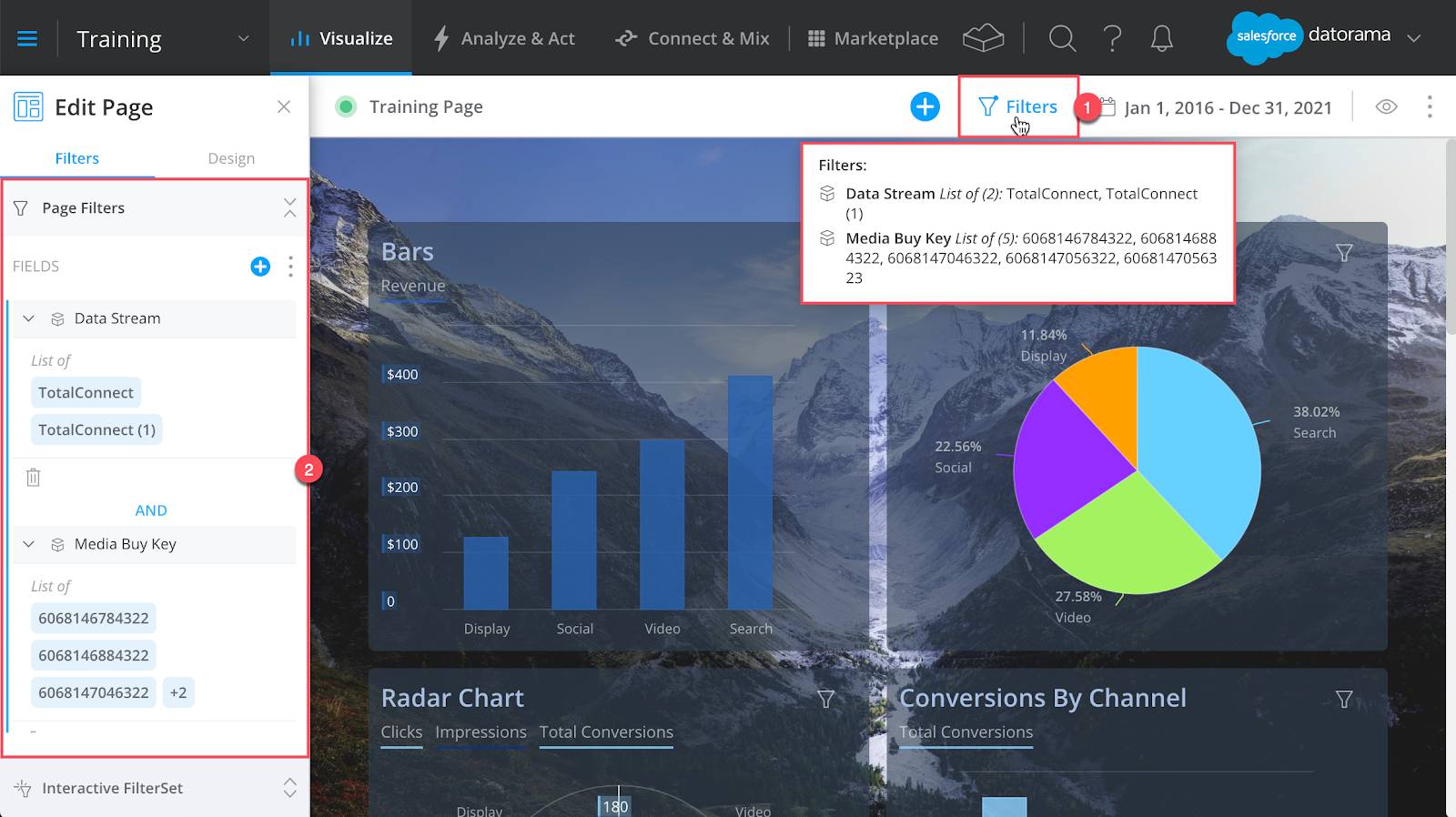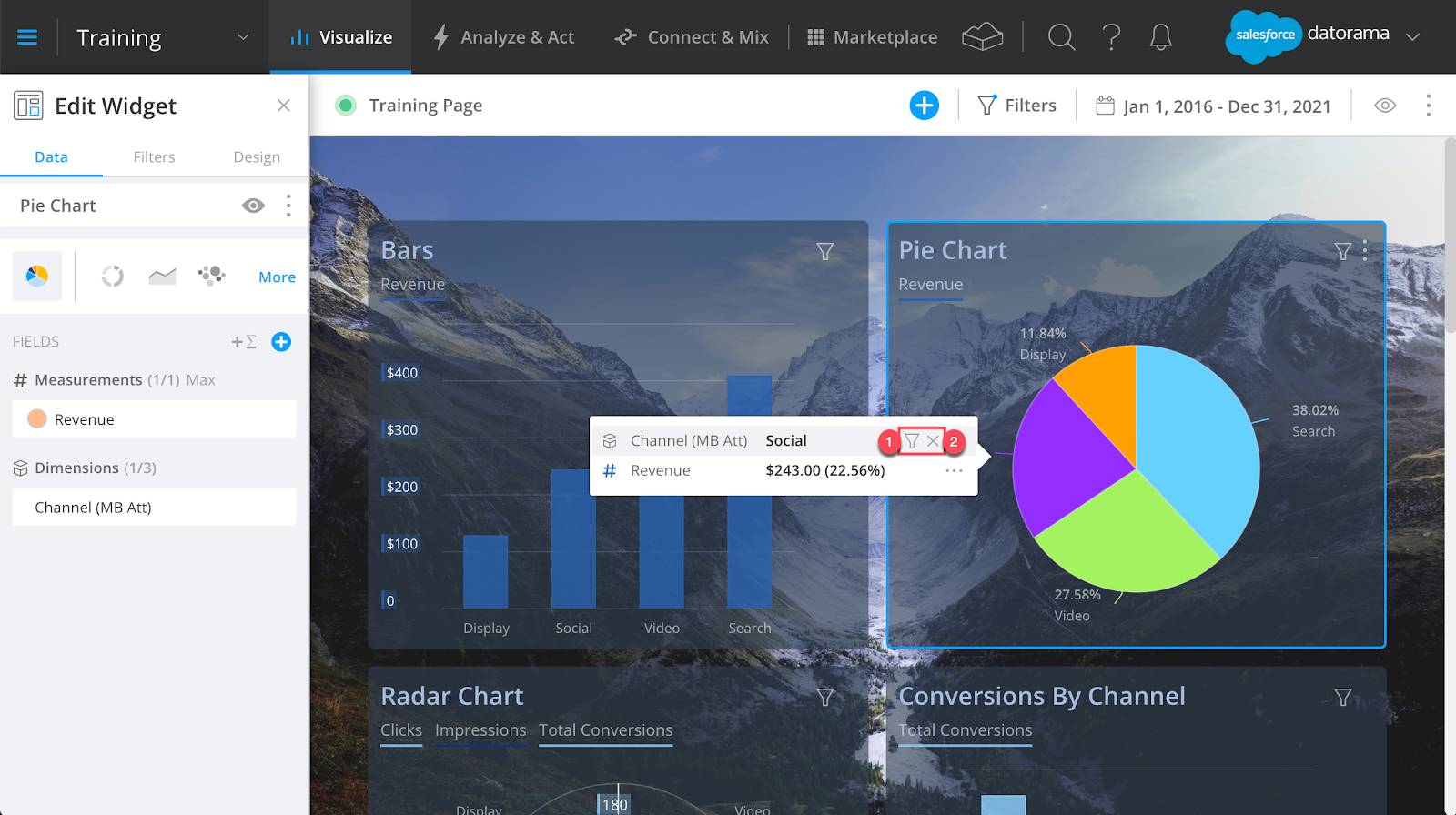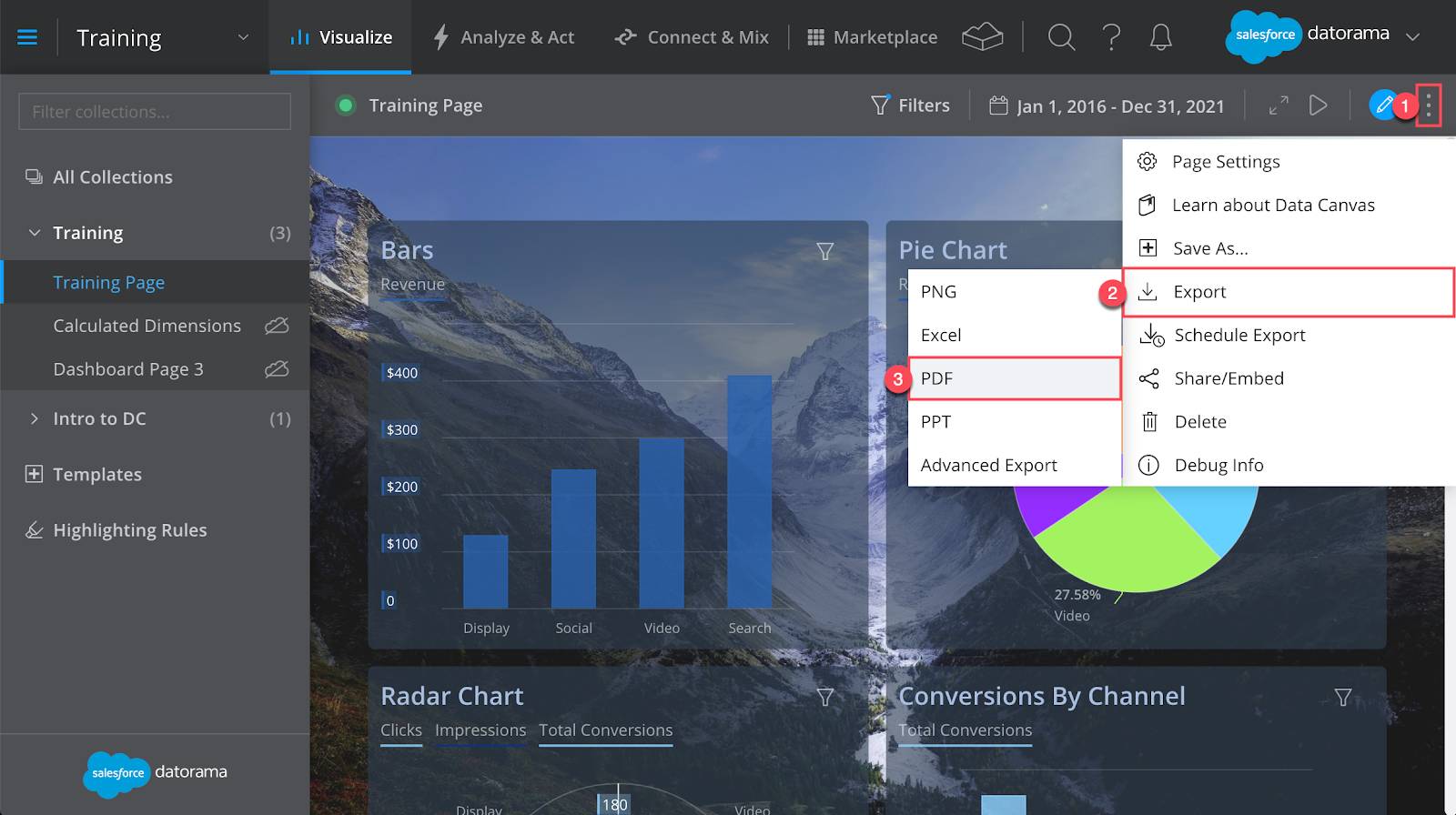Browse and Export Pages
Learning Objectives
After completing this unit, you’ll be able to:
- Browse dashboard pages with ease.
- Use widget quick filters.
- Export your collection, page, or widget.
Browse Your Dashboard Page
Now that you've created a dashboard page, it’s time to learn how to browse, filter, and take action on the page.
A dashboard page shows a snapshot in time, and in order to analyze the dashboard page’s data properly, it’s important to look at the timeframe and filters applied to the page. Hovering over the funnel icon (1) at the top of the page produces a tooltip detailing all the filters applied to the page. Clicking on the funnel opens a tab showing all the applied filters (2).
Knowing how to view the filters applied to a page is vital, giving users context so they can properly interpret the data. In the example here, data is filtered to certain media buys and specific data streams.

Use Widget Quick Filters
It’s possible to drill down into data further by slicing the page by a specific dimension or excluding the data of a specific dimension within a widget. For example, you can slice the page by social data so that all the widgets only display social data, or exclude all search data from the widgets on the page. To do this, select the dimension you want to slice by or exclude. For example in the Pie Chart, hover over the options and click either the filter icon (1) to slice the data on the page or the x icon (2) to exclude the value.

Your data is now modified to your specific requirements and can be filtered as needed to analyze the data by any stakeholders who view your dashboard page.
Export Your Collection, Page, or Widget
Now that your collections, pages, and widgets are fully customized, you’re ready to present the data to your stakeholders. Sharing data with a large group of stakeholders can be tricky. This is where the export option comes in handy. It allows you to export different elements into various formats:
- Collections can be exported into PDF, and PPT formats.
- Pages can be exported into PNG, Excel, PDF, and PPT formats.
- Widgets can be exported into Excel, CSV, PNG and PDF formats.
To export an element, click on its Options menu (1), hover over Export (2), and select the export format you want, such as PDF (3). Once you select the relevant format, a task processing window appears and will notify you once the export is ready for download.

Advanced Export is also available within the export options. Advanced export gives you the power to design the layout of your page before exporting it, customizing it for print, presentations, or emails. A layout includes a page's structure and saved settings so that you can reuse it in the future. You can maintain different layouts based on your use case, including interactive filtersets, making it easier than ever to create an efficient export, that includes only the relevant materials for your stakeholders.
Once you’re in advanced export, you can select the type of file you want to download, the size of the page, the layout of the widgets on the page, and much more. You can even save your layout so that you can export the same layout each time.
Now all your data is saved and ready to present or share whenever it’s needed!
Watch this video to learn more about browsing pages.